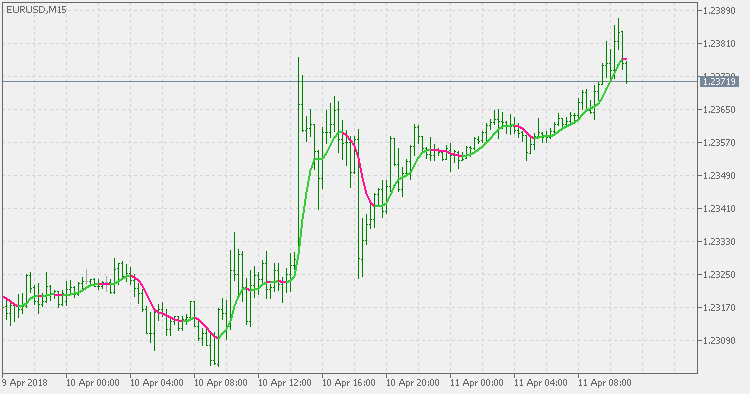Join our fan page
- Views:
- 5492
- Rating:
- Published:
-
Need a robot or indicator based on this code? Order it on Freelance Go to Freelance
In his article "Trading With An Adaptive Price Zone", Lee Leibfarth uses an interesting variation of EMA.
Even though the author of the article did not use that name, due to the nature of how the indicator is calculated, we are going to use the "double smoothed EMA". Unlike the similar attempts of smoothing existing indicators, this indicator is not lagging when compared to "regular" EMA. Quite the opposite: even though it is significantly smoother, it is leading when we compare it to "regular" EMA. So, whenever a smoothness and speed of reaction to market changes is required from a filter/average, double smoothed EMA is a good candidate to do the job.

 Glitch Index
Glitch Index
Glitch Index represents the percentage move price has made above or below the detrended SMA.
 Congestion index
Congestion index
The Congestion Index attempts to identify the market's character by dividing the actual percentage that the market has changed in the past x days by the extreme range.
 Triple DSEMA
Triple DSEMA
This version uses double smoothed EMA instead of using Hull average, and since double smoothed EMA is never overshooting, that issue is solved. Being a very smooth average too, double smoothed EMA is really a good filter/average to be used in the "triple" series.
 Stochastic of Hull
Stochastic of Hull
Hull average is used prior to stochastic calculation thus filtering the prices before they are used in the stochastic calculation. This method is used since it adds much less lag than if the smoothing of the already calculated stochastic value would be used.